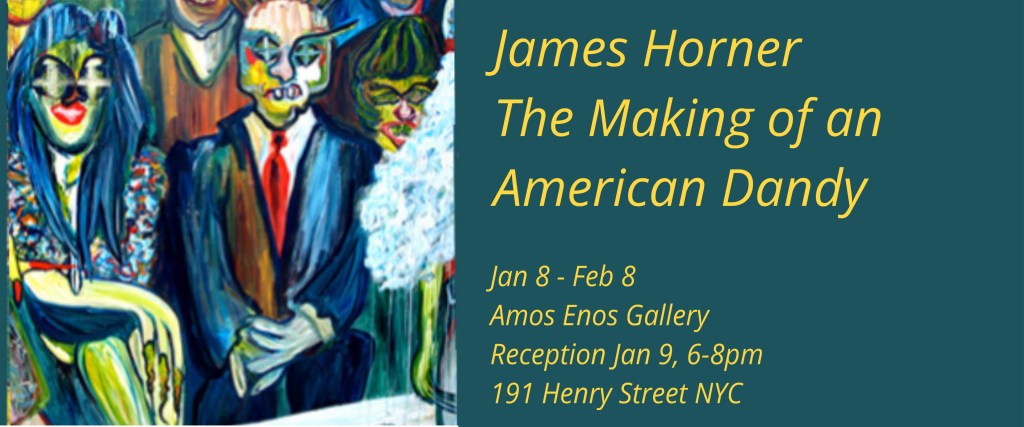
Contributed by Sharon Butler / Sean Tatol, the art critic who maintains a snarky website called Manhattan Art Review, recently penned a piece for The Point about art criticism titled “Negative Criticism, a sentimental education.” In an era in which many critics prefer to describe work rather than judge it, Tatol’s Manhattan Art Review is notable for the “Kritic’s Korner” — short, sometimes scathing reviews that include a star ranking system: five is great, four is good, three is okay, two is bad, and one is awful. At artnet critic Ben Davis took a deep dive into Tatol’s essay in a two-part piece (one and two), that brings in ideas by other critics who have written on the topic. Davis wonders if “’negative criticism’”’ is the right way to frame the solution, or even if ‘the question of judgment’ is really a full picture of what is at stake.” I asked contributors at Two Coats of Paint if they had any thoughts about the essays or the state of art criticism, and today we are running a response from Two Coats editor and contributor Jonathan Stevenson.
Kinder, gentler critics: an overdetermined phenomenon? / Contributed by Jonathan Stevenson
It’s tempting to lament the demise of the takedown review. The form invites both schadenfreude and outrage, which are energizing. In the literary world, it had been fading for some time until B.R. Myers and Dale Peck revived it in the naughts. They enjoyed an extended moment of visceral celebrity, but it seemed to burn out relatively quickly on a pyre of stern earnestness. Literary Hub does publish a list of the year’s “most scathing book reviews,” but the targeted screeds – self-promoting Beltway memoirs, vanity projects by anointed novelists, didactic polemics masquerading as fiction – tend to be overripe, low-hanging fruit that would be exempt from even the most charitable standard of forbearance. The general rule of civility is still that the compulsion to shape opinion is best served by measured reason rather than reactive assault.
This formula arguably leaves room for flagrantly negative reviews, but they seem to have gone the way of literary feuds. It would now be as rare for a critic to mercilessly slam, say, a Colson Whitehead book as it would be for Richard Ford to spit in his face – which he did in 2003 over a nasty review Whitehead had published in the New York Times, also less likely to materialize today. Unless the writer in question is one famous and successful enough to be bulletproof, or a public figure with an indelible target on his or her back, the general rule is that if the book is disliked it just doesn’t get reviewed. Reinforcing this disposition are increasingly acute cultural sensitivities and the accompanying disempowerment of an entrenched, largely white, cultural elite. Some 14 years after the incident, Ford wrote a candid if defiant reflection on it in Esquire, whereupon he was branded an unreconstructed racist in The Guardian. Even if dramas like the Whitehead–Ford spat are inevitable and the equities complicated, most critics would just as soon not have a voice in that kind of noise.
A similar warp seems to prevail in the art world. Although overall capacity for art reviews has undoubtedly increased owing to the proliferation of online criticism, there are few slash-and-burn reviewers or even aggressively opinionated ones. Scarce indeed are swashbuckler critics like the late Dave Hickey, swinging into civilized conversation on a chandelier, brandishing conspicuous attitude and a minatory point of view. But strong and informed opinions are certainly out there; it’s not all pablum. And, of course, the if-you-can’t-say-anything-nice-don’t-say-anything-at-all dispensation is hardly undiscriminating or culturally lethargic: silence implicitly imparts disapproval or inadequacy. Moreover, leavening judgment with caution and qualification or taming it with folksiness may be a practically ineluctable manifestation of collective self-preservation and communitarianism. Given that making a living as an artist or an art writer is pretty tough to begin with, yet another institutionalized impediment – a barrier to entry or an accelerant of exit – is hazardous to the health of the commons. More broadly, in an inhospitable world, art is a welcome refuge that perhaps ought not be made bilious.
Piquancy does sharpen discourse and accent life, and a Hickey or two would surely be welcome and manageable. To constructively shape the zeitgeist, though, bad boys and bad girls need to possess the rare gift of genuine, affirmative vision and to generate exceptional if not pristine prose. Those seeking to make or break careers or indulge misanthropy – think of the villain-critics of film like Addison DeWitt or Waldo Lydecker – are unlikely to endure happily. As a structural matter, dedicated disrupters also only work well in small doses, lest a herd of pretenders inundate the field and produce critical anarchy – perhaps a standing threat in a playing field leveled or “democratized” by the internet and social media. Finally, even honest, truth-to-power salvos can be risky for their purveyors, as Jedediah Leland might attest. The proverb about glass houses applies.
About the author: Jonathan Stevenson is a New York-based policy analyst, writer, and editor, contributing to the New York Times, the New York Review of Books, and Politico, among other publications. He is a regular contributor to Two Coats of Paint. His piece on John Bolton’s The Room Where It Happened in the New York Review of Books made Literary Hub’s “most scathing” list in 2020
Related posts:
Part 1: On “negative criticism”
“On Being Not-Nice in the Art World,” the Two Coats of Paint Conversation recorded January in which Adam Simon and Laurie Fendrich led a discussion on the issue of negative criticism.























My kind of “Back to School” article. Bracing. Stevenson’s sentence on Dave Hickey is worthy of the late “swashbuckler.”